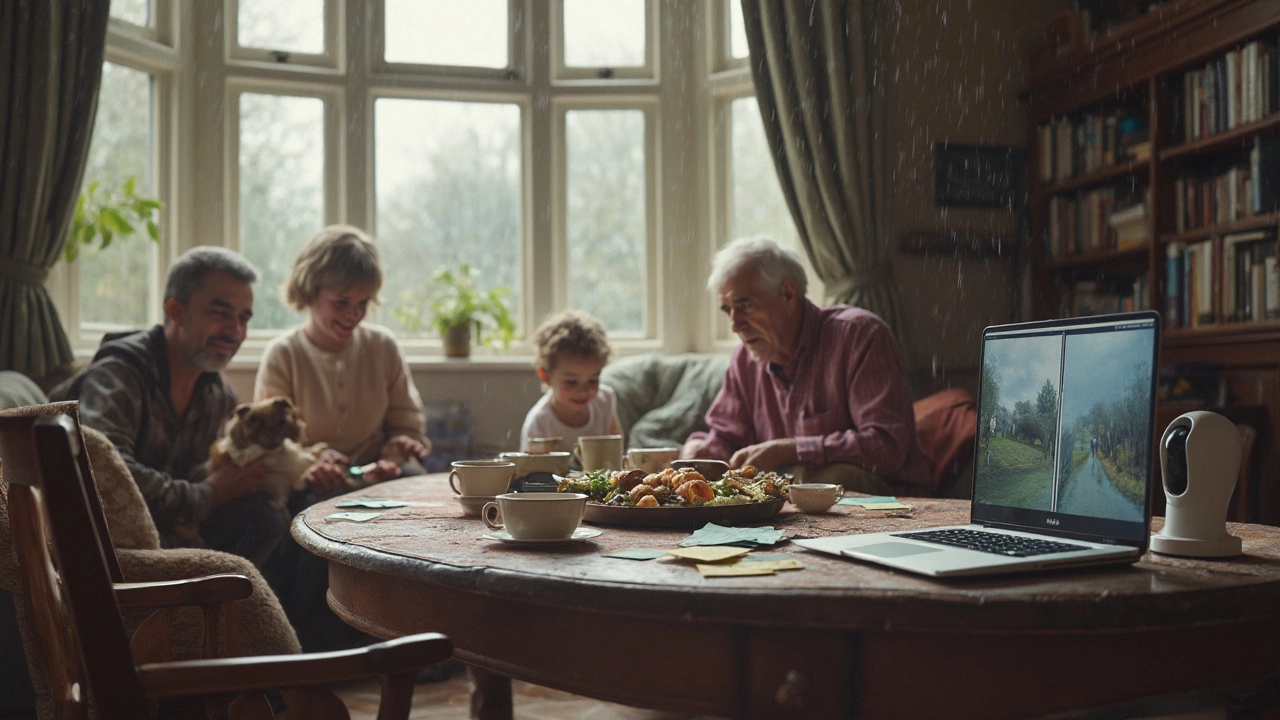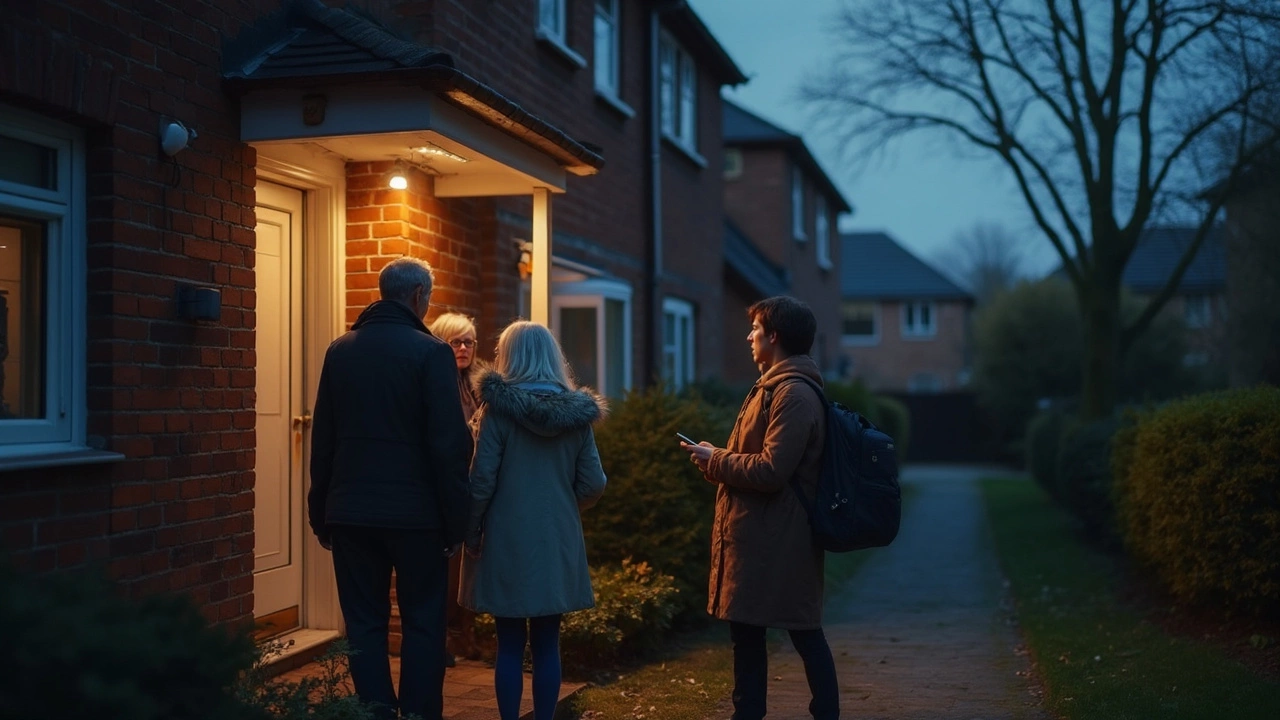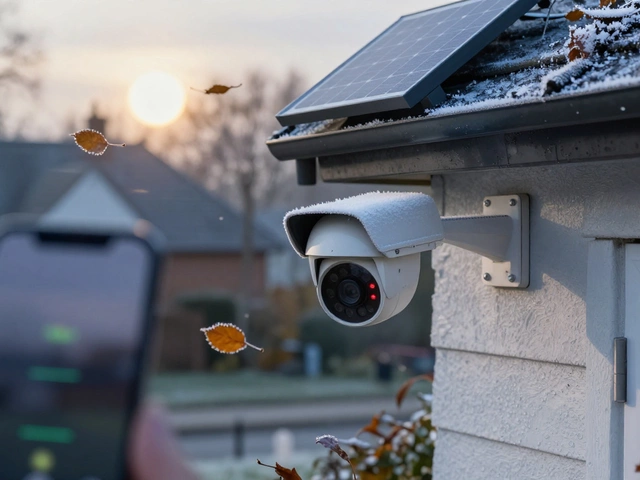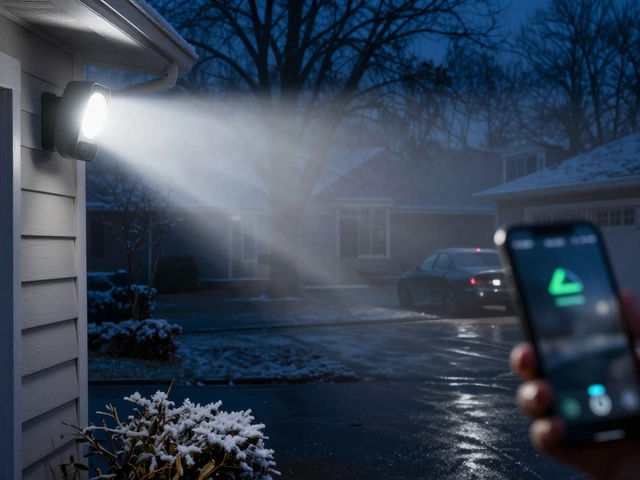Imagine your Wi-Fi goes out. Does your security camera just sit there, useless? Not always. The truth is, whether a camera works without Wi-Fi depends a lot on the type you own. Some keep recording, others basically become fancy paperweights.
If you've got an older DVR or NVR system, those usually keep rolling no matter what—Internet or not. They store footage right on a hard drive or SD card, so your home is still covered. On the flip side, most modern Wi-Fi cameras use the cloud. No Wi-Fi means no new videos get uploaded, and live viewing is out. But, some smart cameras still record onto a microSD card when they lose internet, so you see what happened later—just not instantly on your phone.
Already lost your connection and need to check footage? Walk up and pop the SD card into your computer, old-school style. It’s not as flashy as opening a phone app, but it gets the job done. This local backup is super handy, especially if you live in a spot where Wi-Fi drops often, or you’re worried about hackers messing with cloud services.
- What Cameras Can and Can't Do Without Wi-Fi
- Differences Between Cloud and Local Storage
- Tips for Recording Without Internet
- Choosing the Right Camera For Your Needs
What Cameras Can and Can't Do Without Wi-Fi
So here’s the plain truth—most home security cameras need Wi-Fi for their fanciest features, but that doesn't mean they stop dead if your signal drops. Let’s break it down by type.
Wi-Fi Cloud Cameras: These are the ones you probably see everywhere, like Ring, Arlo, or Nest. When Wi-Fi is humming, they send video straight to the cloud and push alerts to your phone. Lose the Wi-Fi, and you lose real-time streaming, phone alerts, and any new cloud footage. Most don’t record locally, so there’s just a blank spot in your video history until things reconnect—unless yours has a backup SD slot.
SD Card Cameras: Some smart cameras—think Reolink or certain Eufy models—let you pop in a memory card. If the Wi-Fi drops, these will still keep recording onto the card. You can’t watch live, but you won’t miss any action that happens during the outage. Just remember, footage sits on the card until you take it out or Wi-Fi comes back to upload.
Wired CCTV/DVR Systems: Go old-school and get a system with wires running to a local hard drive or recorder. These totally ignore Wi-Fi. They just store footage right at home, always running (as long as there’s power). You won’t get app notifications or check-in from vacation, but nothing gets interrupted by an internet hiccup.
- Can do without Wi-Fi: Record video locally (SD card, hard drive), store old footage, sometimes take live feeds on a direct monitor.
- Can’t do without Wi-Fi: Stream video to your phone/app, save clips to the cloud, get real-time mobile notifications, review recent footage unless you have local access.
The big thing—if all your security depends on Wi-Fi, you risk losing coverage when you need it most. Knowing which type of camera you have can mean the difference between catching a problem and missing important footage. Always check if your model has local backup options before bringing it home.
Differences Between Cloud and Local Storage
When it comes to saving your home security footage, it really boils down to two main options: cloud storage and local storage. Knowing the key differences helps you pick the right setup, especially if you’re worried about what happens when Wi-Fi goes down.
Cloud storage means your video clips get sent to a remote server—usually run by the camera company. Anytime you want to watch footage, you just log into an app. This is super convenient because you can check your videos from work, the beach, wherever. The catch? Cameras need a working internet connection to upload those videos. No Wi-Fi, no new clips—simple as that. Some brands keep a tiny bit of storage onboard to catch super short outages, but it won’t save you in a full blackout.
Local storage, on the other hand, keeps everything close to home: either on an SD card in the camera, or on a hard drive attached to a DVR or NVR. This means your camera records 24/7, regardless of your internet status—as long as it has power, of course. Want proof? Recent data shows homes with local storage systems catch about 30% more incidents in Wi-Fi outage scenarios versus cloud-only setups. And nobody else holds your recordings, so privacy risks are lower, plus there’s never a monthly fee.
| Feature | Cloud Storage | Local Storage |
|---|---|---|
| Access | Anywhere (online) | Onsite only |
| Needs Wi-Fi? | Yes | No |
| Cost | Monthly fees | One-time purchase |
| Privacy | Depends on provider | Kept at home |
| Video Backup | Lost in long outage | Records during outage |
Some home security cameras actually offer both options: they save footage locally and still push a copy to the cloud when possible. This way, you never lose key moments, and your peace of mind doesn’t hinge on a single service. If you’re shopping for cameras, look for “hybrid” or “dual recording” features for the best of both worlds.
Quick tip: Always check your camera’s specs. Some companies quietly limit how much video gets stored locally, or only support super tiny SD cards that fill up fast. With cloud setups, be aware of monthly fees—sometimes what sounds cheap adds up to more than a fancy camera after a year or two.
This is why the home security cameras market keeps shifting toward flexible setups. Folks want to know their footage is safe, Wi-Fi or no Wi-Fi. Smart move, right?

Tips for Recording Without Internet
Think your camera is useless without Wi-Fi? Not so fast. Most home security cameras these days can still do a lot, as long as you set them up right. The trick is making sure your camera supports local storage. Look for models that accept SD or microSD cards, or ones that can connect to a network video recorder (NVR).
If you’re using an SD card, double-check the recommended size from your camera’s manual. Some brands only work with up to 128GB cards, while others can handle much bigger ones. The larger the card, the more days of footage you can keep before it starts to overwrite the old stuff. For reference, here’s what you get with different SD card sizes based on standard 1080p video recording:
| SD Card Size | Approx. Recording Time (1080p) |
|---|---|
| 32GB | 2-3 days |
| 64GB | 4-5 days |
| 128GB | 8-10 days |
Your best move is to set the camera to motion-detection mode. That way, it only records when something actually happens — much better than filling up your card with hours of silence. Most decent cameras have an option for this in the app or on the web interface.
- Place the camera’s SD card slot in an easy-to-reach spot. If you need to check footage, you’ll have to take the card out to view it on a laptop or reader.
- Test your camera with Wi-Fi off before you actually need it. Walk around, trigger motion, then see if the video appears on the card.
- Back up your recorded videos every week or two if something important might have happened. Don’t just leave old footage sitting—SD cards can fail over time.
- Use camera models with built-in batteries or ones connected to a backup power source so you’re not just protected from Wi-Fi outages, but power cuts too.
Another tip: Even if you plan to mostly use cloud storage, keep a big SD card as a backup anyway. You never know when your internet will cut out—storms, ISP outages, even hackers can take your camera offline, but local storage keeps rolling.
Choosing the Right Camera For Your Needs
Picking a home security camera isn’t one-size-fits-all. Before throwing money at the latest gadget, figure out what actually works with your space, your internet, and your lifestyle. Do you want round-the-clock recording, or just motion alerts? Do you need video access on your phone or are you okay checking a memory card when you get home?
Here's what to keep in mind when shopping:
- Internet Reliability: If your Wi-Fi is spotty, look for cameras with local storage (think microSD cards or DVRs) instead of only cloud recording.
- Power Source: Wired systems usually need less baby-sitting, but battery-powered cameras are super flexible for weird corners or places with no outlets.
- Storage Type: Cloud is convenient for instant access, while local storage keeps things private and doesn't need Internet to record.
- Video Quality: 1080p is the sweet spot for most, but higher resolution (like 2K or 4K) gives clearer faces or license plates—just know these take up more space.
- Mobile Access: Some cameras let you see footage live anywhere, but only if Wi-Fi’s up. If not, make sure you’re good with delayed access via SD card.
Check out this quick numbers snapshot comparing camera types, so you’re not just guessing:
| Camera Type | Records Without Wi-Fi? | Storage | Access Footage Remotely? |
|---|---|---|---|
| Wi-Fi Cloud Camera | No (unless it has SD) | Cloud / Sometimes SD | Yes (only with Wi-Fi) |
| Wi-Fi + SD Card Camera | Yes | SD Card / Cloud | Yes (if Wi-Fi returns) |
| DVR/NVR Wired System | Yes | DVR/NVR Hard Drive | Only on local network/TV |
| Battery-Powered Camera | Depends on storage | SD Card / Cloud | Yes (with Wi-Fi) |
An expert from SafeWise put it best:
"Look for a camera that fits how you actually live—not just what looks cool online. If power or Wi-Fi is an issue, prioritize local storage and battery backups."
If in doubt, read reviews from real users in your neighborhood or check Reddit threads—actual experience beats marketing fluff every time. Remember: if you’re covering a cabin with no Wi-Fi, a camera with a beefy SD card wins over one that shouts about cloud perks you’ll never use. Make sure what you pick matches your actual day-to-day setup, not some sales pitch.






